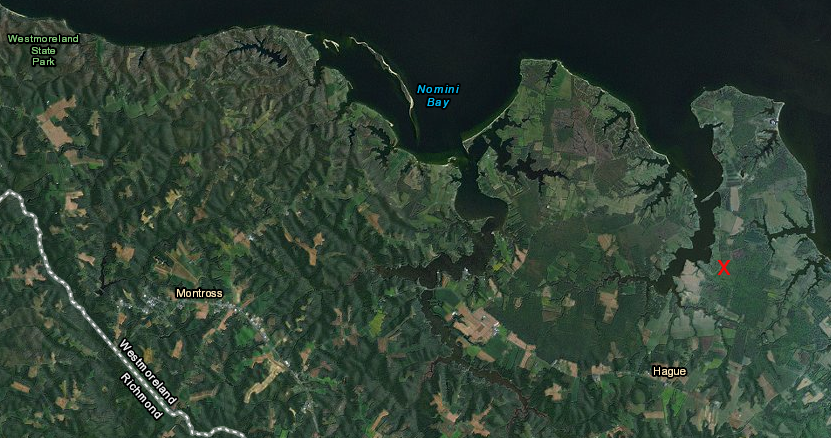
the Coles Point spray irrigation facility (red X) is designed plants absorb the nutrients from wastewater, so nearby shellfish beds are not polluted
Source: ESRI, ArcGIS Online

In Westmoreland County, 70% of soils do not pass the percolation ("perc") tests required by the Virginia Department of Health before a septic system can be authorized. When developing its 1996 Master Sewer Plan, the county realized that any discharge from a new sewage treatment plant into a nearby creek could force closure of the local shellfish harvesting beds.
Building a pipe to discharge at some distance into the Potomac River would require dealing with the state of Maryland, which owns the bed of the river. Instead, the county built a spray irrigation facility. The Coles Point Sewage Treatment Plant ended up with no discharge pipe into the local creek or Potomac River. Wastewater is pumped through a low-pressure system to the treatment plant, which is at a location slightly higher than the houses; gravity is not sufficient to move wastewater through the pipes.
The processed water is then pumped into two large tanks. (A third tank was added in 2010.) The wastewater is sprayed on 50 acres of hayfields during the summer. Much of the water evaporates, and the rest is absorbed - along with the nutrients in the water - by the roots of the hay. The hay is sold too offset costs of operations and maintenance. Red canary grass was planted because it can thrive despite periods of drought, though switchgrass is a possible native species alternative. The fields must be fertiilized - the nitrogen/phosphorous in the waste is not adequate by itself. In addition, gypsum is added to offset the high sodium content in the wastewater, perhaps due to water conditioning systems that convert "hard" into "soft" water.
The state permits spraying up to 2" per week on the fields in the growing season (March-October). That quantity is now measured by rain gauges on the ground because, on hot summer days, evaporation allows the county to spray significantly more volume.
In the winter, when the grass is not growing, Westmoreland is limited to spraying just 1" per week. The community is dominated by summer home use, so the need to spray is greatly reduced in the winter. After Hurricane Isabel saturated the fields, no spraying was possible for three months and some waste had to be trucked to a nearby wastewater treatment plant, but otherwise the tanks allow storage of wastewater until the weather is appropriate for disposal on the hay fields.1